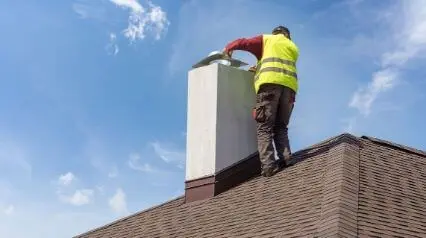What is a Chimney Inspection?
A chimney inspection is a process of assessing a chimney and fireplace performance if it complies with the National Codes of Standards as defined by the National Fire Protection Association (NFPA). This process helps prevent the occurrence of chimney fires, carbon monoxide intrusion and other chimney-related incidents. It is conducted by chimney professionals to ensure fire safety and prepare the household for the winter season.
Importance of a Chimney Inspection
In 2014, the Consumer Product Safety Commission (CPSC) reported an average of 23,000 chimney fires and over 20 deaths in the United States alone. To avoid such incidents, it is necessary to conduct proper chimney inspections to:
- Prevent water from seeping through or smoke from pouring in the property;
- Keep the air quality inside the property to its safe level;
- Check potential hazards such as animal nests, cracks, distorted rain cap, and deterioration due to weather change;
- Secure the operation of the heating systems; and
- Comply with regulatory standards.
Different Levels of Chimney Inspection
It is recommended to perform an annual chimney inspection to thoroughly check blockages and obstruction and help improve fireplace performance. The following are the different levels of chimney inspections depending on its parameter:
Level 1
This level of inspection is recommended for easy-access chimneys and fireplace. It is performed if the chimney is in continued services, usage, and under the same conditions. It is usually conducted without using any equipment or devices.
Level 1 chimney inspection checks the readily accessible portions of the chimney including appliance installation and connections, exterior, interior, chimney connectors, and flue. This helps ensure fireplace and chimney structures are sound, free of obstructions, and no combustible deposits.
Level 2
This level of inspection is significant for newly-bought houses that have experienced an earthquake or extreme weather event, and made major changes to the chimney such as fuel type, form, dimension, or replacement and addition of an appliance.
Level 2 chimney inspection is a combination of visual assessment and performance tests including smoke and pressure tests. It usually requires a video camera to assess the flue, attic, crawlspace, and other inaccessible areas. It helps to identify cracks and damages to the joints in the chimney’s structure.
Level 3
This level of inspection is vital when investigating an incident that caused severe damage to chimney systems such as fire or demolition. It may involve the removal of certain chimney parts when necessary to gain access to subject areas.
Level 3 chimney inspection is required to determine the condition of the chimney systems where a hazard is detected in the concealed area. It helps to easily evaluate and reconstruct the damages including broken pieces of tile, chimney structure, and flue relining.
Vital Points of Chimney Maintenance
Conducting a chimney inspection helps ensure the safety of the property and operational condition of the chimney systems prior to its usage. Performing regular maintenance prevents costly chimney repairs and unexpected incidents. The following are the vital points of chimney maintenance that can help improve your chimney systems:
- Visual Damage
Do not use the chimney if there are visible cracks on walls or broken pieces of tile from the liner. This may cause chimney liners to collapse from high heat. - Intact Chimney Parts
Check the chimney cap and flashing if they are intact and damage-free. A loose fit can build moisture inside the chimney where it could cause leaks and deterioration. Also, it could increase the risk of fire and carbon monoxide poisoning. - Chimney Noise
Do not use the fireplace if there is a buzzing sound emanating from it. It is safe to call chimney professionals for diagnosis and repair. - Deposits of Creosote
Call a certified chimney sweep to perform chimney cleaning to remove combustible materials and measurable deposits of creosote. - Proper Clearance
Keep the chimney unobstructed and provide enough clearance space to prevent contact with the walls. - Installation Issues
Chimneys should be suitable and fit according to standards set by the NFPA to ensure fire safety.



